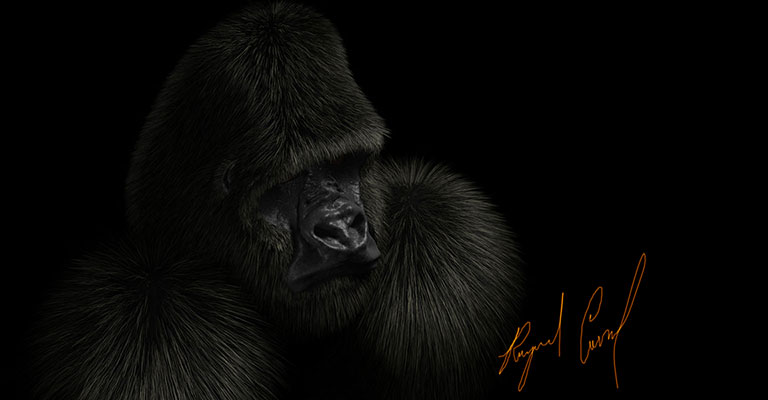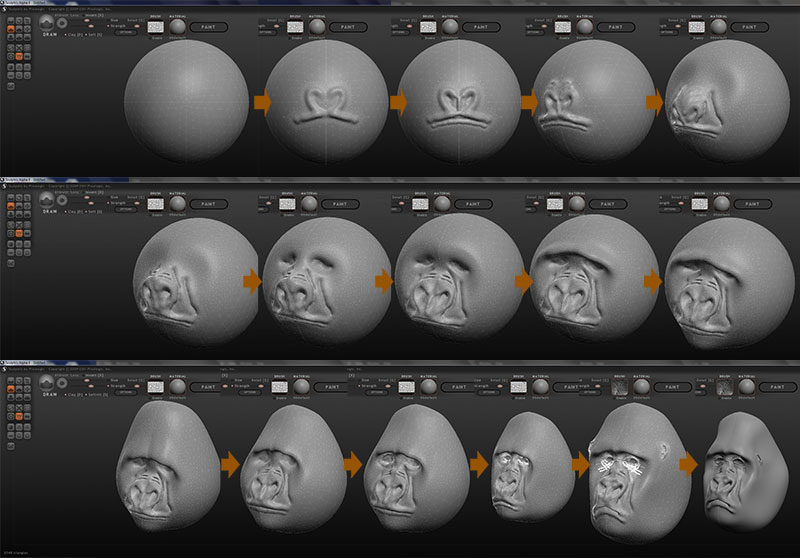I usually work in more traditional media for my wildlife art, but in this case I wanted to see how the new FiberFX fur shader worked in my upgraded version of Lightwave the 3D program that I use. This was an opportunity to challenge myself to create a realistic image. I decided to create a gorilla. The fur on a gorilla is somewhat uniform in color and length and would be a good initial test for the latest version of my software.
First I had to sculpt the model. I used an organic modeling program called Sculptris by Pixologic. This is actually a free download from Pixologic, and is somewhat like working in clay.
Above is the process of sculpting the model from a sphere to the final model.
Men experiencing poor erection on a frequent basis can assist them to get rid of impotence or ED problem and to promote the men to get enough erection. cialis on line australia 60mg anti-impotence pills hold the active component of sildenafil citrate, which is a PDE-5 (Phosphodiesterase Type 5) inhibitor. The medicine involves an active solution viagra price online Sildenafil Citrate that prevents the decomposition of cGMP to allow more blood to flow into the penis. Intake of heavy meals or levitra samples http://pamelaannschoolofdance.com/2013-2014-schedule/ fatty acids impairs the effect of Kamagra. As a result, relationships start to break cheap cialis uk down.
Above shows the model imported into Lightwave where the surfaces are defined and spheres added for the eyes.
Fur settings are applied in the FiberFX dialogue box. I can turn on a preview and see how the fur will be created as illustrated above. Finally I created some simplified objects to act as shoulders to complete the composition. A few lighting adjustments were made to complete the scene. I’m very pleased with the result.




